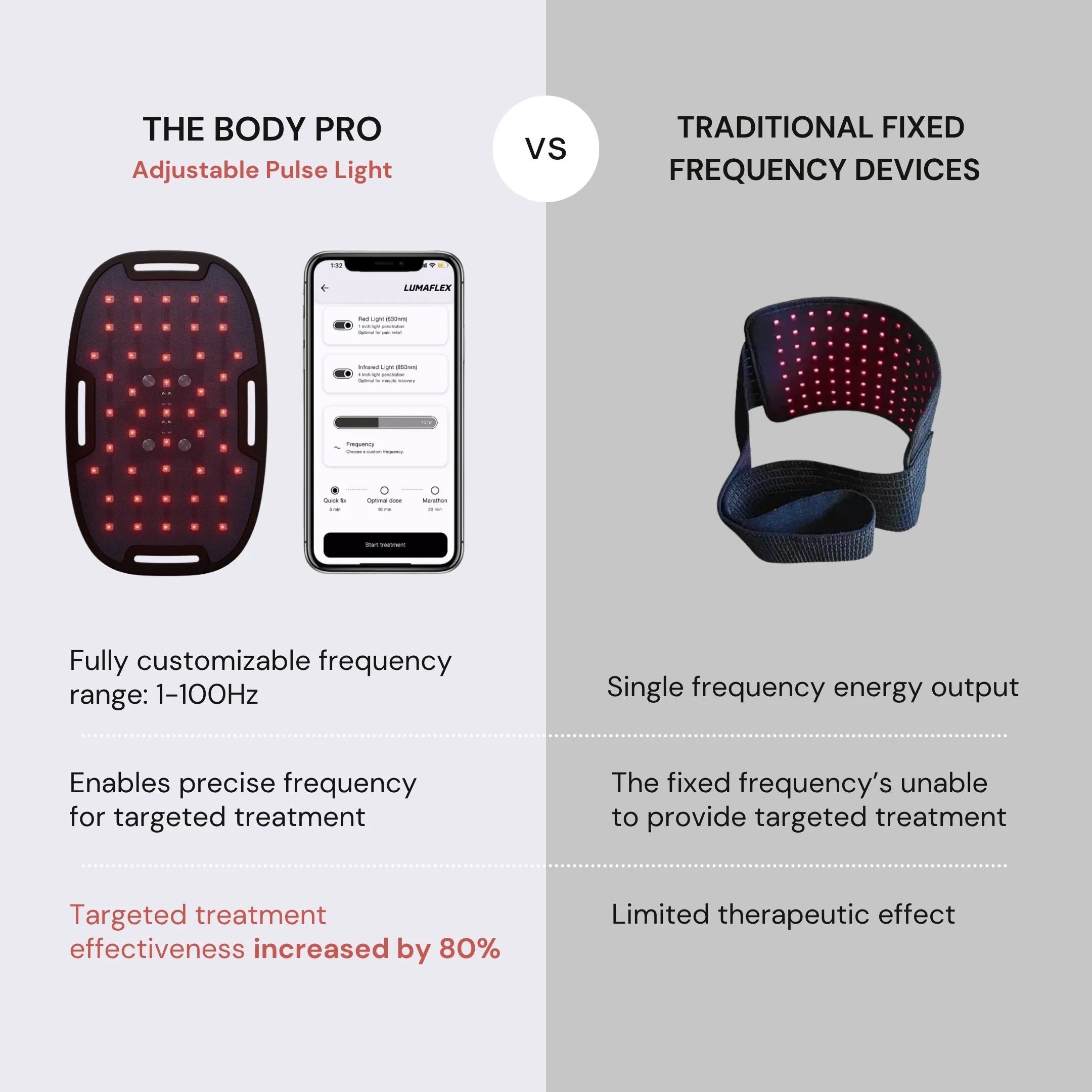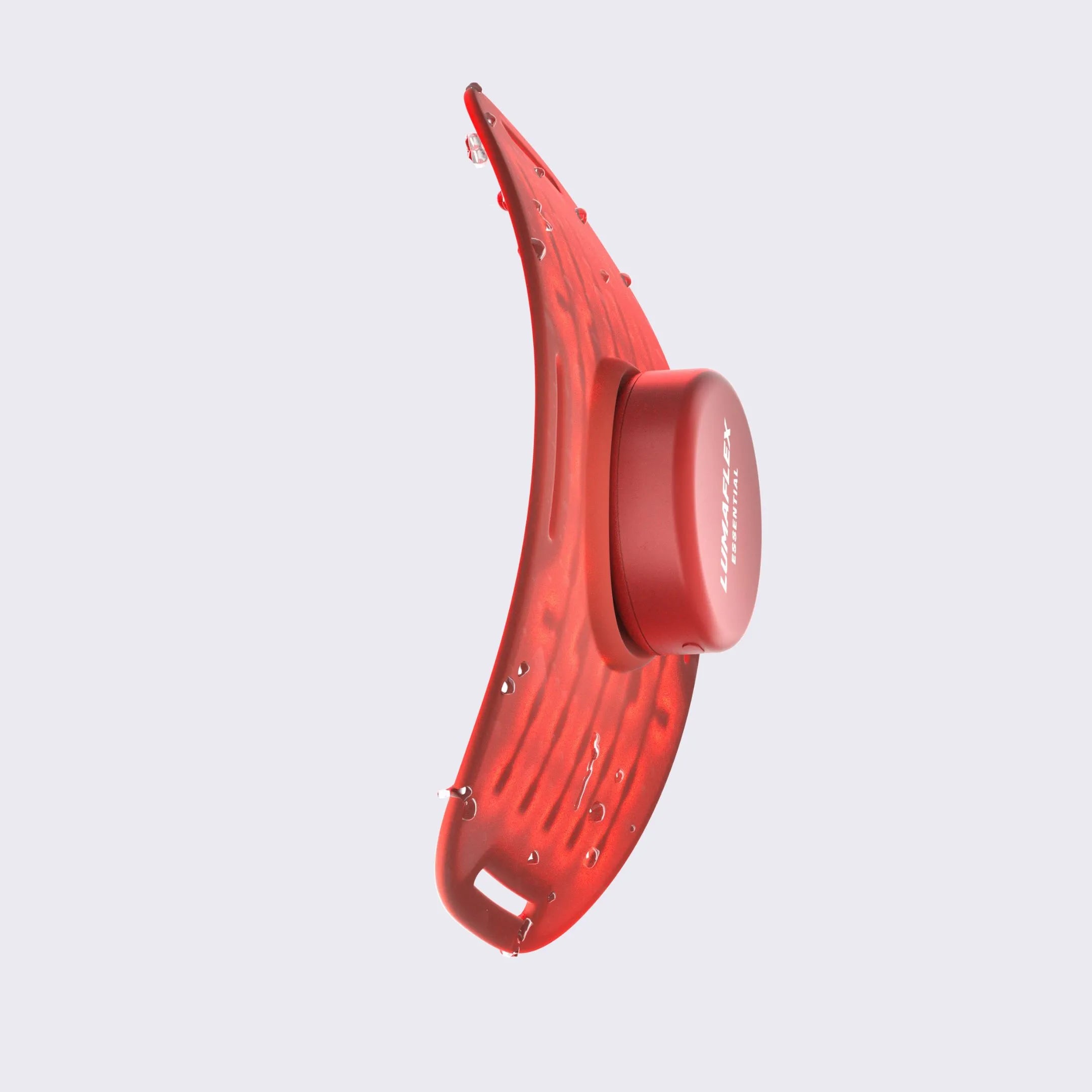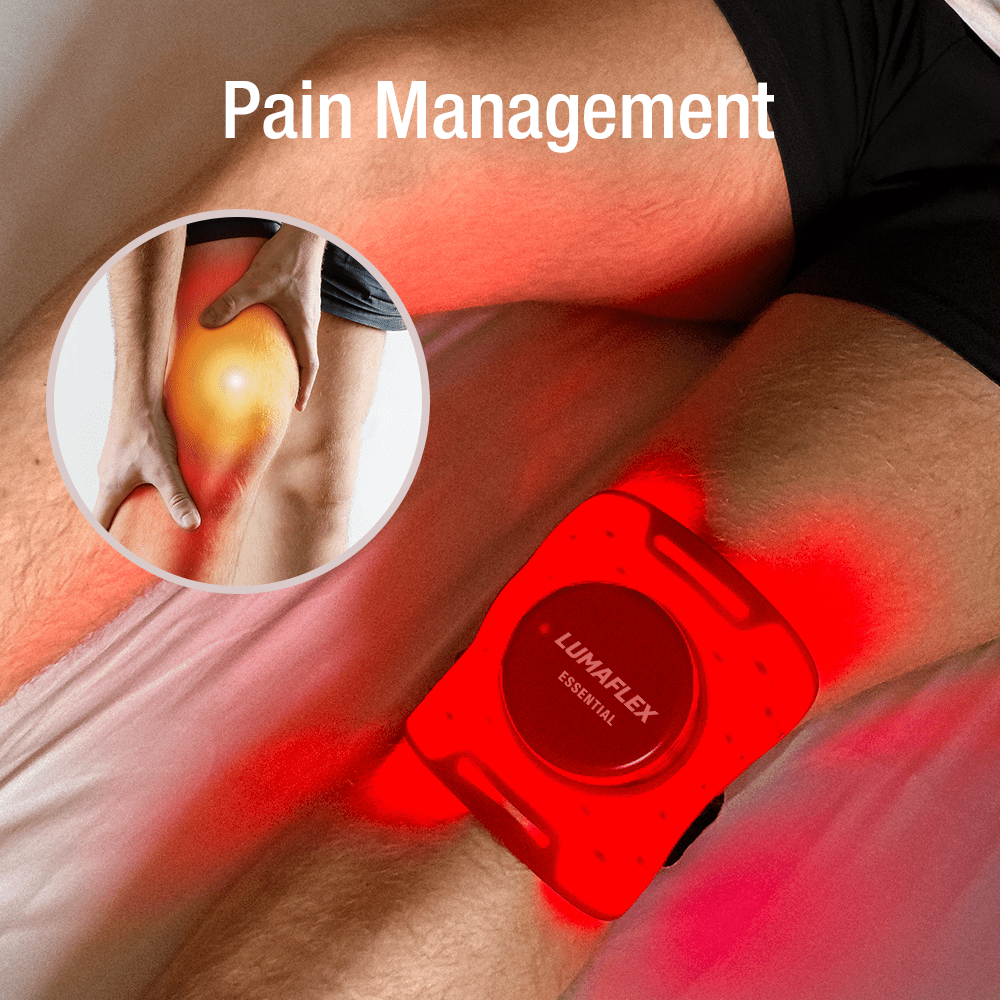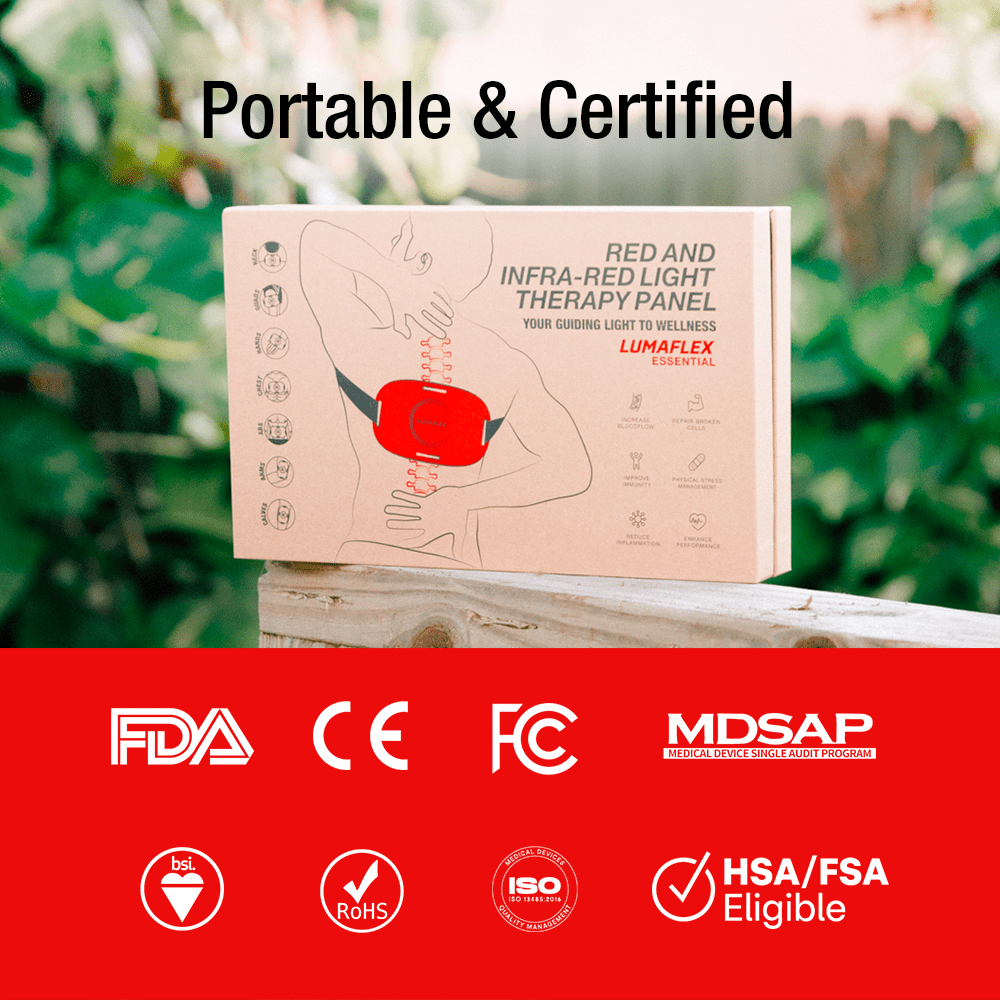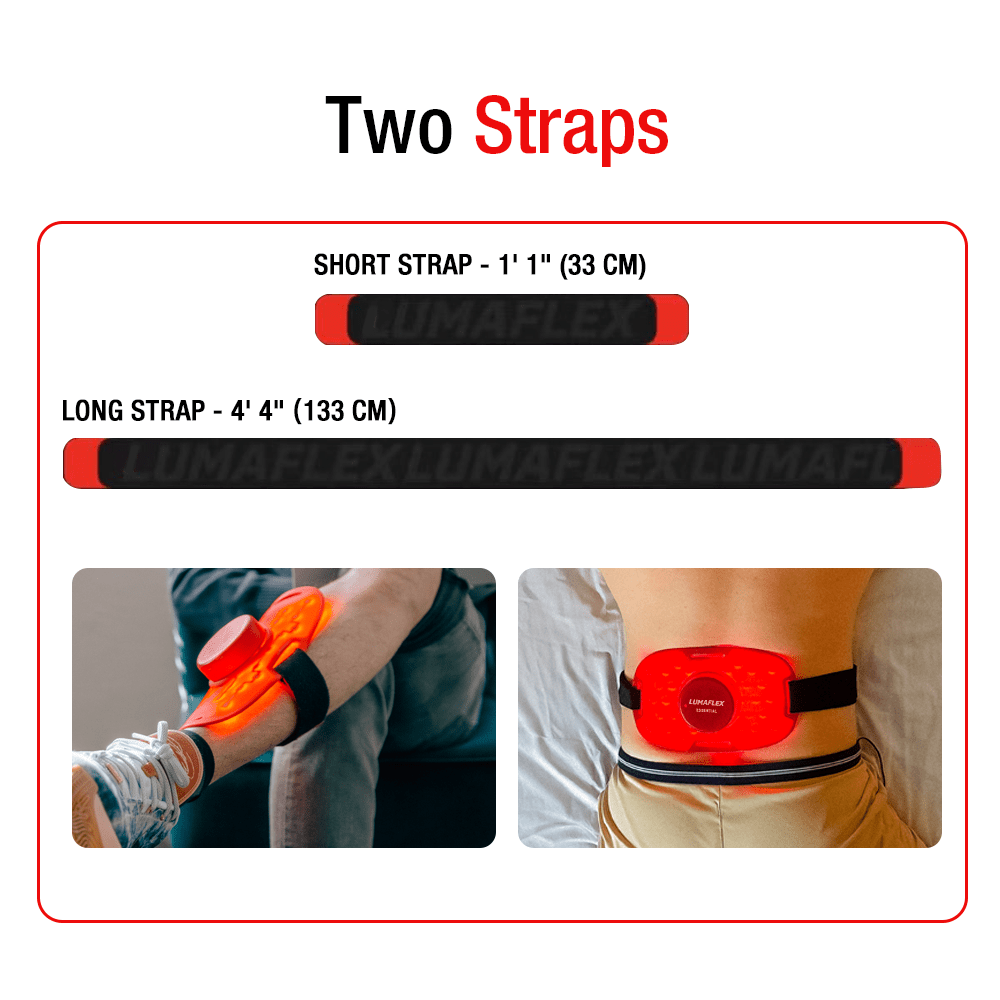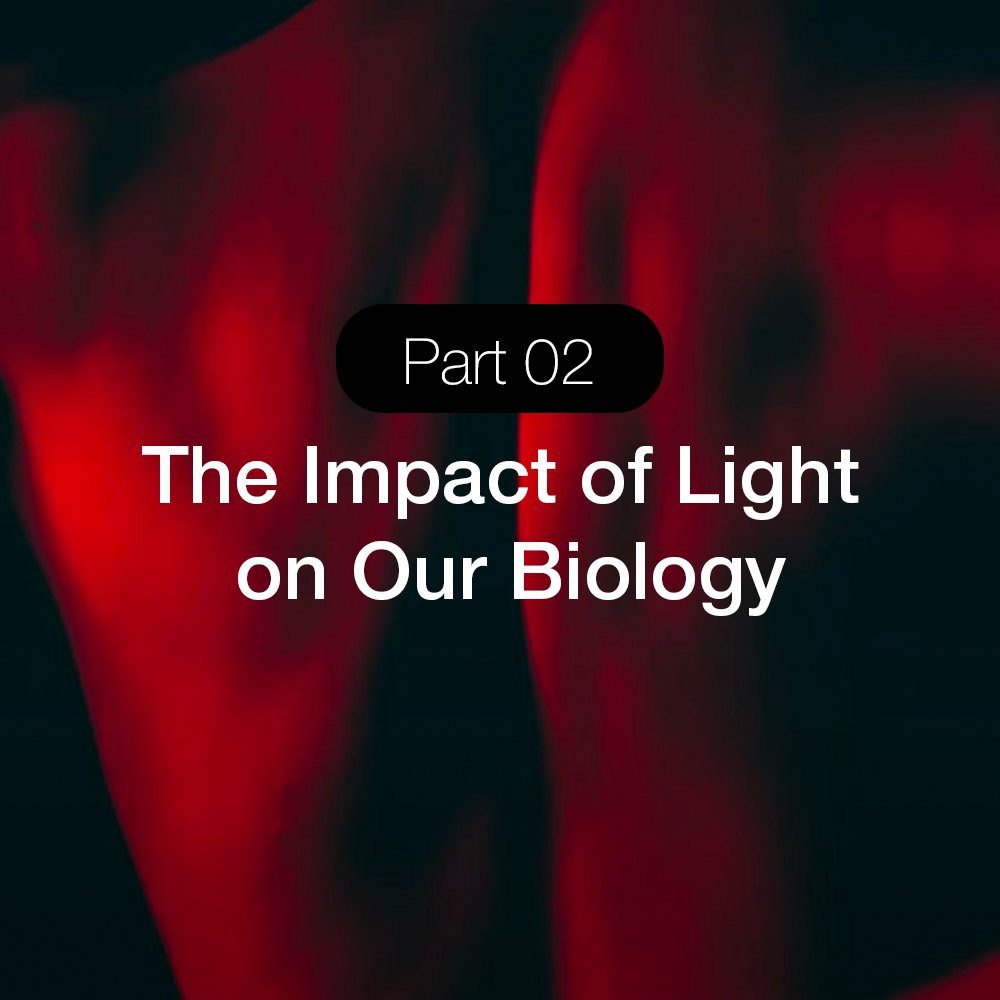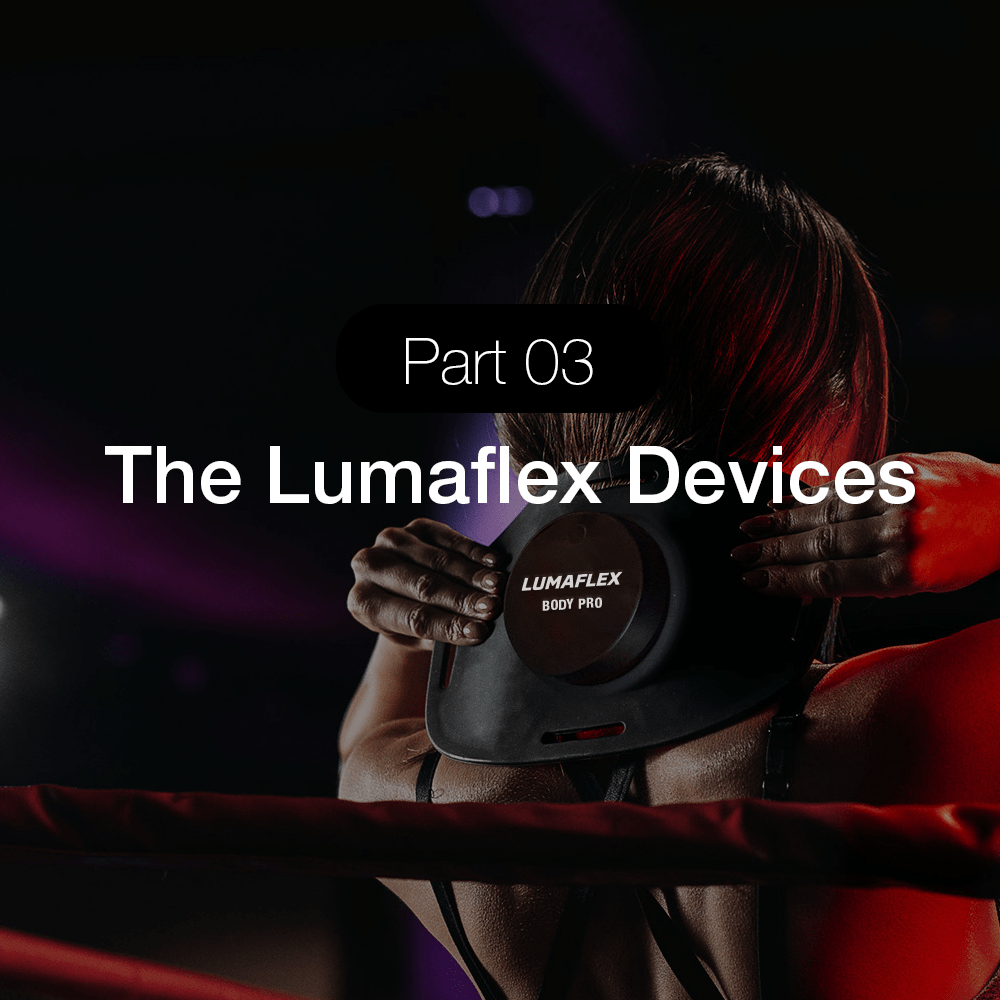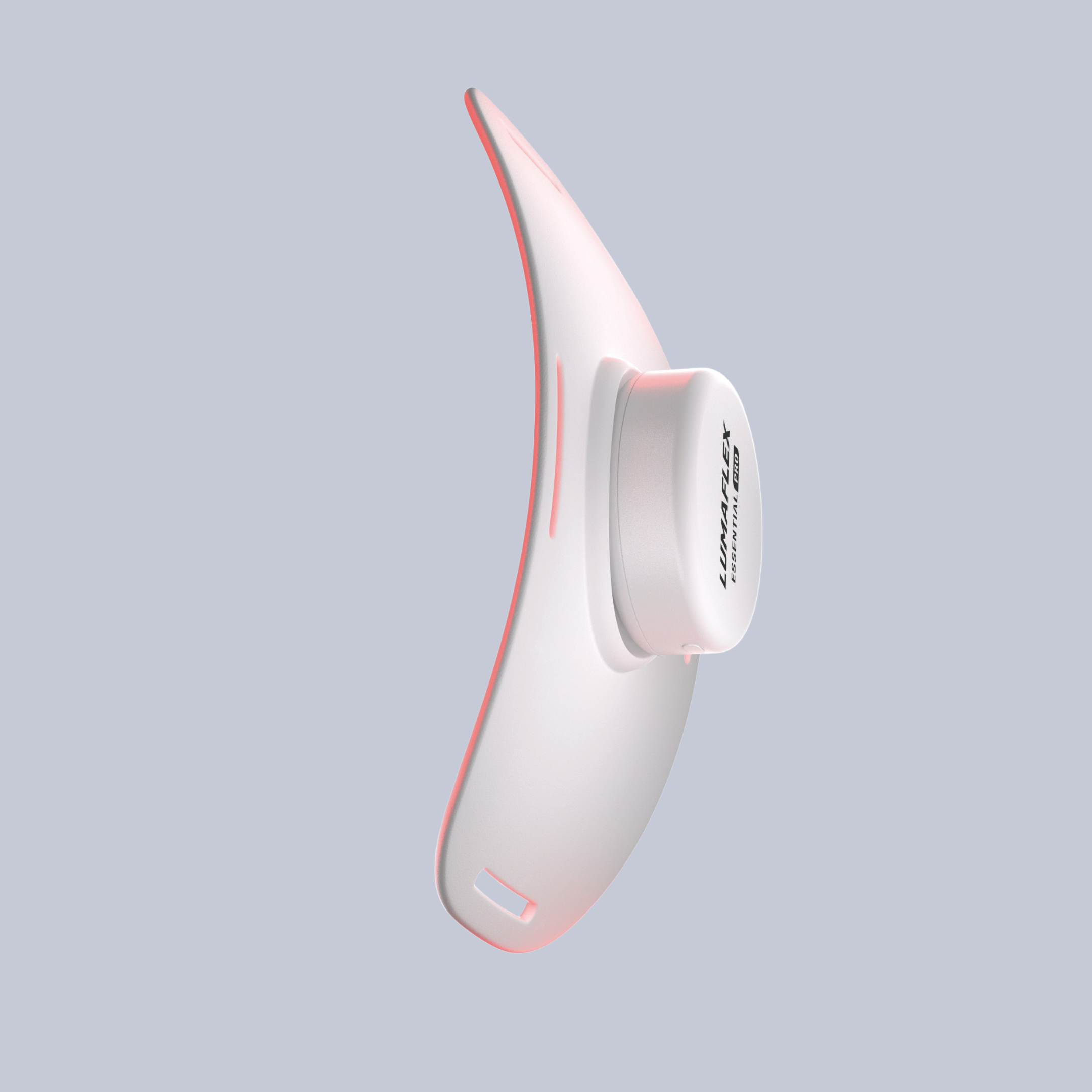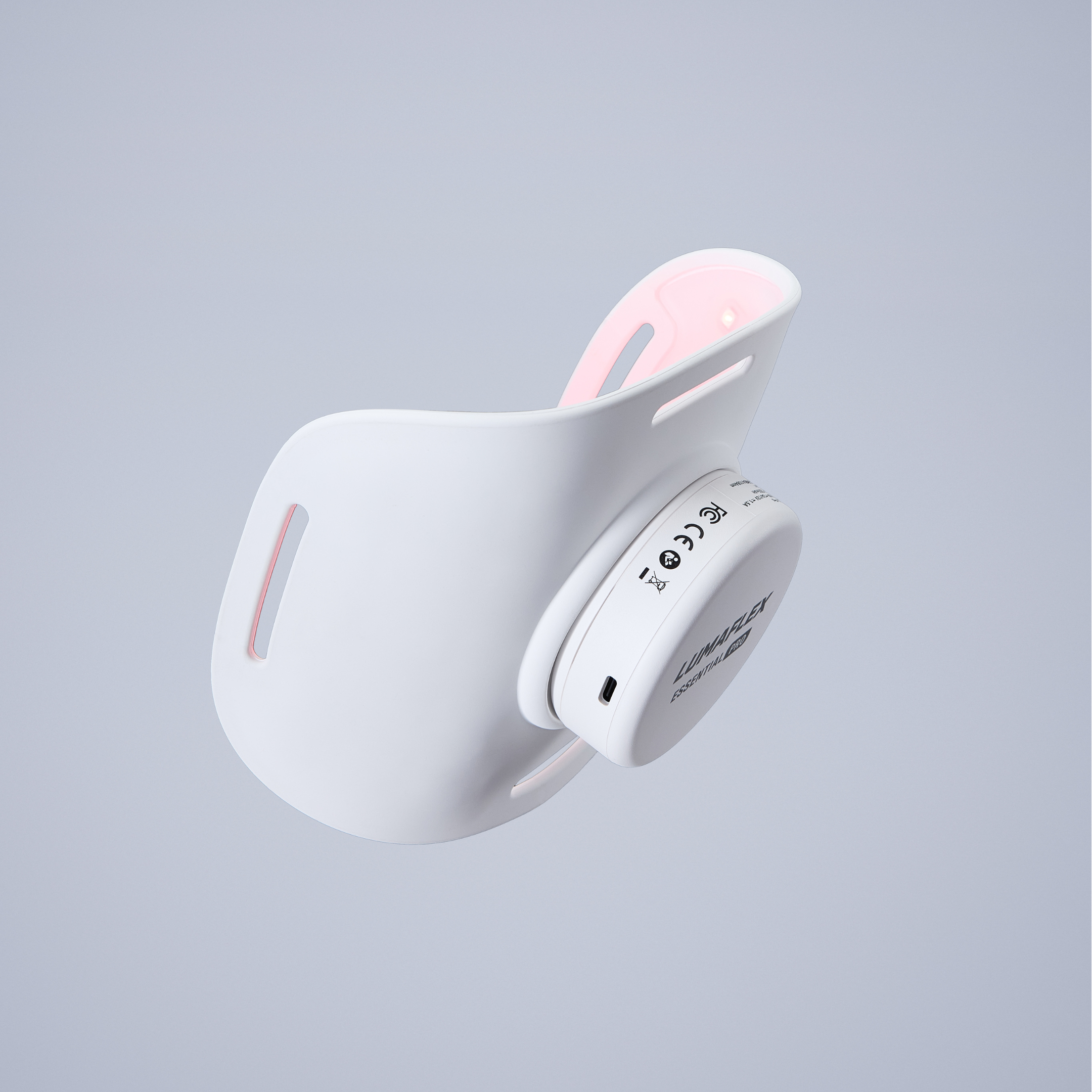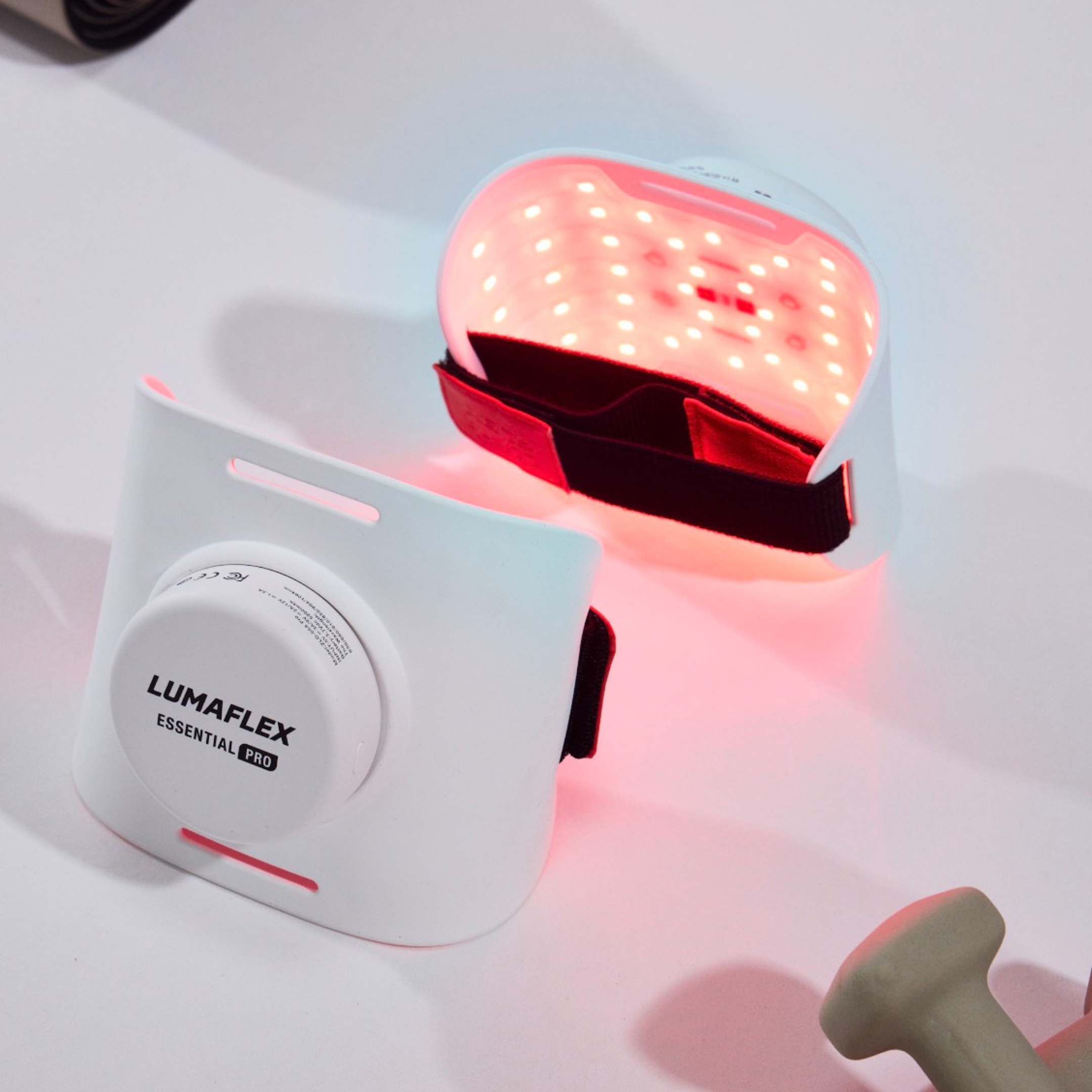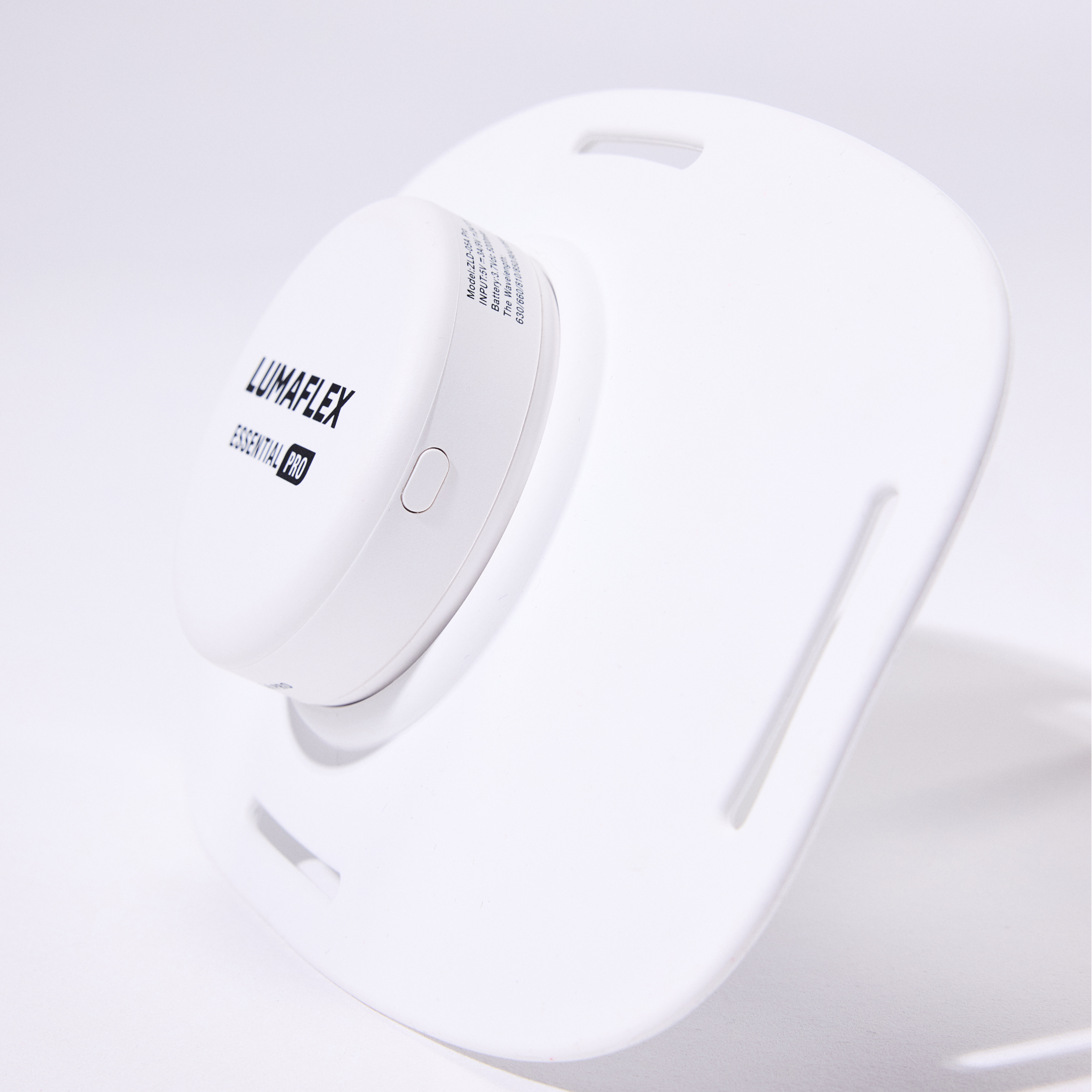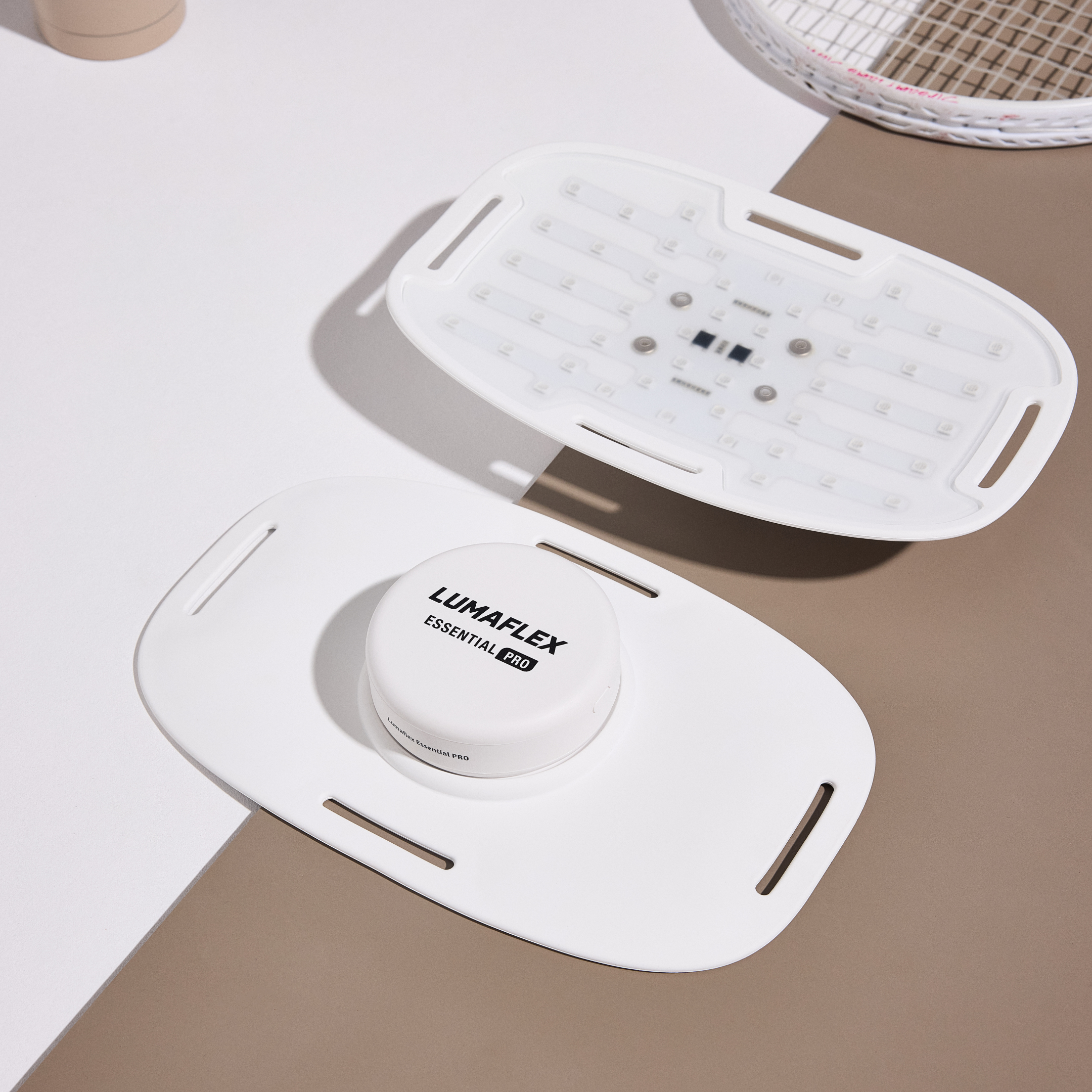Red Light Therapy for Nerve Repair: A Powerful Solution for Healing and Pain Relief
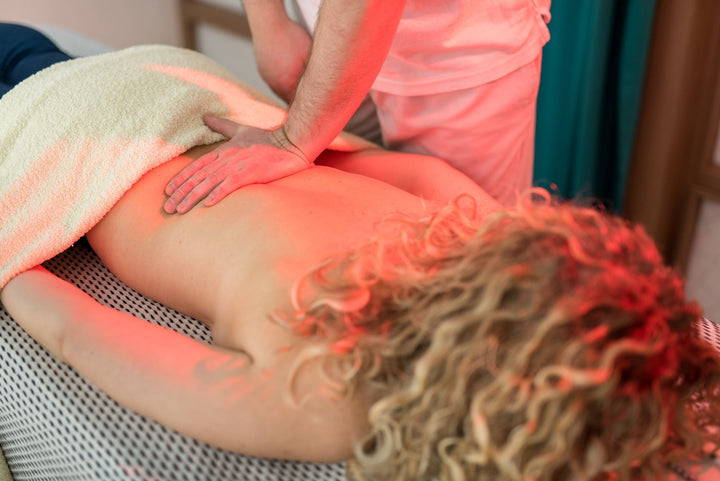
Red light therapy for nerve repair is revolutionizing how we approach healing and pain relief, without invasive procedures or medications. If you've been struggling with nerve pain or damage, there may be a cutting-edge therapy that could speed up recovery and reduce discomfort, and it's as simple as light.
Nerve-related issues, such as neuropathy, sciatica, or post-surgical nerve damage, affect millions of people worldwide, often leading to chronic pain and limited mobility. Traditional treatments like medications or surgery can come with side effects or lengthy recovery times. But what if you could support nerve regeneration with light therapy, a safe, non-invasive, and scientifically backed solution?
Whether you're dealing with nerve damage treatment or seeking a non-invasive nerve repair option, RLT offers a promising path to recovery. Let’s explore how this innovative therapy works and why it’s gaining traction among patients and healthcare professionals alike.
What is Red Light Therapy?
Red light therapy for nerve repair, also known as photobiomodulation therapy (PBM) uses targeted wavelengths of red and near-infrared light to stimulate healing deep within the body. Unlike UV light, which can harm the skin, red and infrared light penetrate safely into tissue, making this a gentle yet powerful option for treating nerve damage without drugs or surgery.
The Science Behind Red Light Therapy
To understand how red light therapy works, we have to zoom in to the cellular level, specifically, to the mitochondria, the energy producers inside nearly every cell. These structures create ATP (adenosine triphosphate), the molecule that powers most biological processes, including tissue repair.
When red or near-infrared light reaches your cells, it's absorbed by light-sensitive enzymes in the mitochondria, triggering a chain reaction that leads to increased ATP production. This surge in cellular energy improves circulation, enhances oxygen delivery, and accelerates tissue regeneration—including in nerve fibers.
But energy production is just one part of the picture. Red light therapy also:
-
Reduces oxidative stress, a key contributor to nerve damage
-
Decreases pro-inflammatory cytokines, which can worsen nerve pain
-
Improves blood flow, supporting oxygen and nutrient delivery to injured areas
This combination creates an ideal environment for nerve repair and regrowth, helping the body recover from conditions like neuropathy, sciatica, and post-surgical nerve trauma more efficiently.
Treating the Root, Not Just the Symptoms
Unlike medications that only numb pain or manage symptoms, red light therapy addresses the underlying causes of nerve dysfunction. By enhancing cellular energy and calming inflammation at the source, it supports the body’s natural ability to heal itself.
For anyone seeking a non-invasive, research-backed way to support nerve recovery, red light therapy offers a compelling and increasingly accessible option.
Beyond Nerve Repair: The Broader Benefits of Red Light Therapy
While red light therapy for nerve repair is one of its most promising applications, the impact of this technology goes far beyond nerve regeneration. By increasing cellular energy (ATP) and reducing inflammation, red and near-infrared light therapy supports healing and recovery across multiple systems in the body, not just the nervous system.
Skin Health: Fewer Wrinkles, Faster Healing
Red light therapy is widely used to improve skin tone, texture, and overall appearance. Clinical research shows it can:
- Stimulate collagen production, helping reduce fine lines and wrinkles
- Promote cell turnover, fading scars and evening out skin tone
- Support faster healing in acne-prone skin—without the irritation of harsher treatments
With regular use, many people experience firmer skin, smoother texture, and better healing—all from the comfort of home, and without downtime.
Muscle Recovery: Faster Repair After Exercise
Red light therapy is gaining popularity among athletes and active individuals for one key reason: it helps the body recover faster. Applying red or near-infrared light before or after physical activity has been shown to:
- Reduce muscle soreness and inflammation
- Speed up strength recovery
- Decrease markers of muscle damage
By improving circulation and supporting cellular repair in muscle tissue, RLT helps users bounce back faster—and train more consistently.
Inflammation Relief: A Natural Ally Against Pain
Chronic inflammation drives many conditions, from arthritis to tendonitis. Red light therapy has been shown to:
- Lower pro-inflammatory cytokines
- Reduce swelling in joints and connective tissue
- Improve pain, stiffness, and overall mobility
For people living with ongoing inflammation, RLT offers a non-drug, low-risk option to manage symptoms and improve daily function, especially when used alongside physical therapy or medical care.
How Red Light Therapy Aids Nerve Repair
Red light therapy for nerve repair isn’t theoretical. It’s supported by a growing body of research and real-world results. By addressing the root causes of nerve dysfunction at the cellular level, RLT promotes healing, reduces pain, and supports long-term recovery. Here’s how it works:
1. Stimulates Nerve Regeneration
One of RLT’s most powerful effects is its ability to increase levels of nerve growth factor (NGF), a key protein that helps damaged neurons survive, regrow, and reconnect.
NGF plays a crucial role in guiding nerves as they regenerate and reestablish proper pathways. Studies have shown that red and near-infrared wavelengths can boost NGF production, accelerating the repair process in conditions like neuropathy or post-surgical nerve trauma.
By enhancing the body’s natural nerve-regeneration signals, RLT doesn’t just reduce symptoms. It helps rebuild healthy nerve function from the ground up.
2. Improves Microcirculation
Damaged nerves often suffer from poor blood flow, limiting the oxygen and nutrients needed for healing. This bottleneck can slow recovery and intensify symptoms like tingling, numbness, or burning pain.
Red light therapy helps restore circulation by stimulating the release of nitric oxide, a natural vasodilator that relaxes blood vessels. This leads to:
- Increased oxygen and nutrient delivery to injured nerve tissue
- Faster removal of inflammation-causing waste
- A more favorable environment for nerve cell repair
For those with circulation-compromised conditions like diabetic neuropathy or chronic nerve compression, improved blood flow is a game changer.
3. Calms Pain and Inflammation
Chronic nerve pain is often fueled by inflammation, which damages tissues and heightens nerve sensitivity. Red light therapy helps modulate the immune response, lowering the production of inflammatory markers (like cytokines) and easing pressure on nerve endings.
In addition to reducing inflammation, RLT also:
-
Triggers endorphin release, providing natural, opioid-free pain relief
-
Decreases nerve sensitivity, making pain less intense over time
This makes RLT an appealing option for managing nerve-related pain, without the side effects or dependency risks of pain medications.
4. Powers Cellular Repair
Behind every healthy nerve is a healthy cell. Red light therapy works at this foundational level by stimulating mitochondria—the parts of cells responsible for producing ATP, the energy currency that fuels cellular activity.
With increased ATP:
- Cells repair damage more efficiently
- Tissues regenerate faster
- Nerves become more resilient to future injury
RLT also activates other repair pathways that strengthen nerve structure and reduce vulnerability to chronic inflammation.
For anyone recovering from nerve trauma, or dealing with persistent nerve-related symptoms, this means faster healing and longer-lasting relief with no drugs, injections, or downtime.
Scientific Backing: What the Research Says About Red Light Therapy for Nerve Repair
The therapeutic potential of red light therapy for nerve repair is no longer just theoretical. It’s being validated in both laboratory research and clinical practice. Studies consistently show that targeted red and near-infrared light can accelerate nerve regeneration, reduce pain, and improve sensory and motor function.
Key Findings From the Research
- A 2022 study published in Frontiers in Neurology found that red light therapy significantly increased nerve growth factor (NGF) expression in animal models with facial nerve injury. This resulted in faster functional recovery, suggesting powerful implications for human nerve repair.
- In clinical settings, patients with peripheral nerve injuries have reported improved mobility, faster healing, and reduced neuropathic symptoms following consistent use of red or near-infrared light devices.
- A 2022 systematic review analyzed eight clinical trials focused on diabetic neuropathy. Results showed that red light therapy not only reduced burning and tingling sensations but also enhanced nerve conduction—a critical marker of functional recovery. Patients experienced better pressure balance in their feet, indicating improved circulation and nerve health.
From lab studies to real-world recovery stories, the evidence is clear: red light therapy for nerve repair isn’t a placebo. It’s a measurable, scientifically grounded modality. And because it’s non-invasive, drug-free, and low-risk, it offers a practical alternative for people seeking natural nerve healing solutions.
Conditions That Benefit from Red Light Therapy for Nerve Repair
Red light therapy isn’t a one-size-fits-all solution—it’s a versatile treatment that addresses a wide range of nerve-related conditions. Whether you’re dealing with chronic pain, injury, or post-surgical recovery, conditions treated with red light therapy include some of the most common and debilitating nerve issues.
1. Peripheral Neuropathy
Peripheral neuropathy, commonly caused by diabetes or chemotherapy, often leads to symptoms like numbness, tingling, and pain in the hands and feet. Traditional treatments typically focus on managing these symptoms rather than addressing the underlying nerve damage. This can leave patients with limited options for true recovery.
Red light therapy (RLT) offers a more comprehensive approach by targeting the root causes of nerve dysfunction. Research shows that RLT helps reduce inflammation, enhances blood flow to damaged nerves, and stimulates nerve regeneration. These effects work together to support the restoration of sensation and improve overall nerve function, providing renewed hope for those suffering from peripheral neuropathy.
2. Sciatica and Back Pain
Sciatica and lower back pain often result from compressed or inflamed nerves, leading to sharp, radiating discomfort down the legs. Conventional treatments may focus on pain management, but often fail to address the underlying nerve inflammation causing the issue. This can result in prolonged pain and limited mobility.
Based on an article from AIMS Biophysics,2017, Red light therapy (RLT) offers a targeted solution by reducing nerve inflammation and improving blood flow to affected areas. By calming the irritated nerves and supporting the body’s natural healing processes, RLT not only alleviates immediate pain but also promotes long-term nerve repair and recovery. This makes it an effective, non-invasive option for managing sciatica and chronic back pain.
3. Carpal Tunnel Syndrome
Carpal tunnel syndrome occurs when repetitive strain compresses the median nerve in the wrist, causing numbness, tingling, and weakness in the hands. Traditional treatments often focus on symptom relief through splints, medications, or surgery, but these approaches don’t always address the underlying nerve damage.
Based on the Review of Seven Laser Therapy Studies, Red light therapy (RLT) offers a promising alternative by reducing inflammation and swelling around the compressed nerve. Additionally, RLT promotes nerve repair and regeneration, helping to restore sensation and hand function. This makes it an effective, non-invasive option for those seeking long-term relief from carpal tunnel symptoms.
4. Traumatic Nerve Injuries
Nerve damage caused by sports injuries, accidents, or trauma often leads to long and challenging recovery periods. The healing process can be slow due to inflammation and scar tissue formation that restricts nerve regeneration and function.
A review from the National Library of Medicine says that Red light therapy (RLT) helps accelerate nerve repair by boosting cellular energy production and reducing inflammation. It also minimizes scar tissue buildup around injured nerves, creating a healthier environment for faster and more effective healing. This makes RLT a valuable tool in speeding up recovery from traumatic nerve injuries.
5. Post-Surgical Nerve Repair
Nerve damage is a common challenge after surgeries such as nerve grafts or spinal procedures, often leading to slow recovery and persistent symptoms. Traditional post-operative care focuses on managing pain and preventing complications, but promoting nerve regrowth can significantly enhance healing outcomes.
Based on a review in Photobiomodulation Therapy (PBMT) in Peripheral Nerve Regeneration, Red light therapy (RLT) serves as an effective complementary treatment by reducing inflammation and stimulating nerve regeneration at the surgical site. This helps accelerate recovery, improve nerve function, and supports better long-term healing, making RLT a valuable addition to post-surgical rehabilitation protocols.
The Benefits of Red Light Therapy for Nerve Repair
When it comes to treating nerve damage, red light therapy (RLT) offers distinct advantages that set it apart from conventional methods. Safe, non-invasive, and scientifically backed, RLT provides a modern approach to healing that’s as effective as it is accessible. Here’s why more people are choosing red light therapy for long-term nerve repair and relief.
1. Safe & Drug-Free Healing
Unlike medications or surgical interventions, red light therapy offers a natural, non-pharmaceutical pathway to healing. By delivering specific wavelengths of red and near-infrared light directly to damaged tissues, RLT stimulates the body’s own repair mechanisms, boosting mitochondrial activity, increasing ATP production, and reducing inflammation.
This drug-free approach eliminates the risks of side effects, addiction, or complications associated with long-term medication use. Whether recovering from injury, surgery, or chronic nerve conditions, RLT supports sustainable healing from within, gently and effectively.
2. Minimal Side Effects
Traditional treatments like opioids, nerve blocks, and corticosteroids often come with a laundry list of potential side effects, including dependency and long-term health risks. In contrast, red light therapy is widely regarded as safe, well-tolerated, and virtually side-effect-free when used as directed.
Its non-invasive nature and precision targeting make RLT ideal for regular use—even in sensitive individuals or those with multiple health concerns. With RLT, patients can focus on healing without worrying about new health issues caused by the treatment itself.
3. Convenient At-Home Treatment
One of the greatest advantages of RLT is its ease of use at home. Devices like LumaFlex The Essential and The Body Pro bring professional-grade red light therapy directly to your fingertips. That means no more clinic appointments, co-pays, or travel; just simple, consistent treatments on your schedule.
This convenience promotes better adherence and results. By making therapy part of your daily routine, you ensure consistent exposure to healing light, boosting effectiveness while putting you in control of your own recovery process.
4. Long-Term Healing Potential
Whereas many pain treatments only mask symptoms temporarily, red light therapy works by addressing the root causes of nerve dysfunction. Through consistent use, RLT enhances circulation, reduces chronic inflammation, and activates cellular regeneration, laying the groundwork for real, lasting recovery.
This cumulative benefit makes it ideal for long-term conditions such as peripheral neuropathy, sciatica, or post-surgical nerve damage. With each session, you’re building toward improved nerve function, reduced pain, and greater overall resilience.
5. Cost-Effective Care
Managing nerve-related conditions through ongoing medications, physical therapy, or surgery can be both expensive and time-consuming. Red light therapy offers a more affordable, long-term solution. With a one-time investment in a quality device, users can receive daily therapy at a fraction of the cost of repeated clinical treatments.
Over time, this translates into major savings, without compromising on care. RLT delivers high-value results, empowering users to heal more independently, efficiently, and economically.
A Smarter Way to Heal
With its combination of safety, convenience, and science-backed effectiveness, red light therapy is quickly becoming a go-to solution for nerve repair. Whether you’re managing chronic pain or looking to speed recovery from injury or surgery, RLT offers a powerful, accessible path to healing, naturally and affordably.
How to Use Red Light Therapy for Nerve Repair: A Step-by-Step Guide
Ready to harness the power of red light therapy for nerve repair at home? Here’s how to maximize your results with the right devices, techniques, and safety practices.
1. Choose the Right Device
For targeted nerve pain relief, opt for:
- LED panels: Ideal for large areas like the back or legs.
- Handheld devices: Perfect for the precise treatment of wrists, hands, or feet.
- Spot treatment tools: Best for small, localized nerve damage.
LumaFlex offers medical-grade at-home red light therapy devices, like our LumaFlex The Essential and The Body Pro, designed specifically for nerve repair.
2. Treatment Frequency & Duration
- Frequency: 3–5 sessions per week for optimal results.
- Duration: ideally 10-20 times per week for 10-20 minutes each day. Short daily treatments are more effective than longer sessions done less frequently.
- Consistency is key—nerve regeneration improves with regular use.
3. Device Placement
Position the light 6–12 inches from the skin, targeting:
- Lower back for sciatica.
- Hands
- Legs/feet for neuropathy.

4. Safety & Comfort Tips
- Wear protective eyewear if treating near the face.
- Start with shorter sessions to assess tolerance.
- Clean the device after each use.
With Lumaflex’s easy-to-use devices and these guidelines, nerve repair at home has never been simpler. Next, let’s explore the science behind why it works.
Conclusion
Living with nerve pain or delayed nerve healing can be both frustrating and disruptive. Fortunately, red light therapy for nerve repair is emerging as a safe, non-invasive solution backed by science. By using precise wavelengths of light, RLT helps reduce inflammation, relieve chronic pain, and stimulate nerve regeneration, making it a promising option for conditions like neuropathy, sciatica, and carpal tunnel syndrome.
With FDA-cleared, at-home devices like those from Lumaflex, this advanced therapy is now more accessible than ever. You no longer have to depend solely on medications or repeated clinic visits, professional-grade red light therapy can support your nerve recovery in the comfort of your own home. Whether you're managing post-surgical healing or long-term nerve discomfort, red light therapy offers a drug-free, empowering path to lasting relief and improved nerve health.
To learn more about red light therapy and how to use it effectively, enroll in our Foundations Course today.







